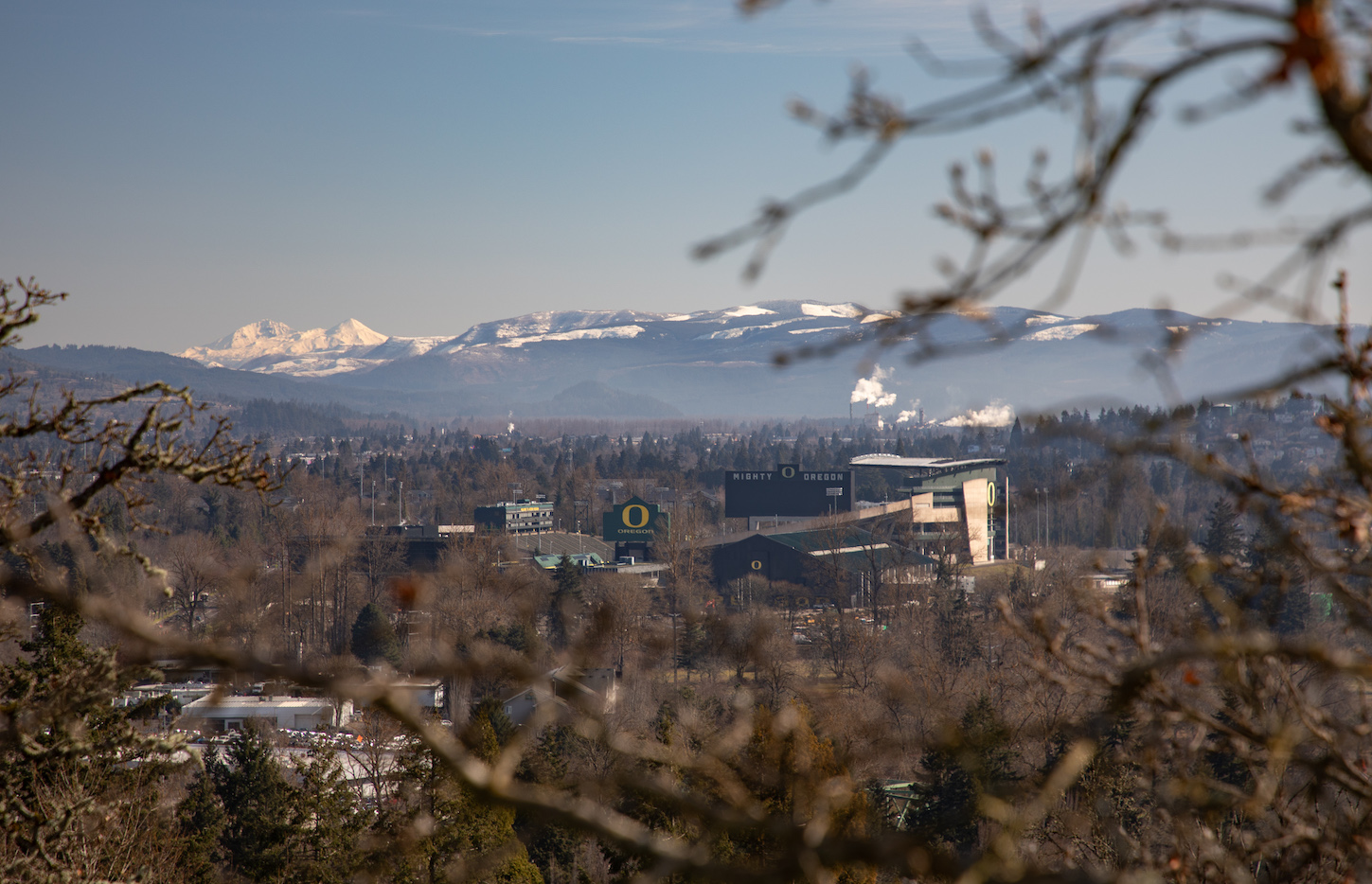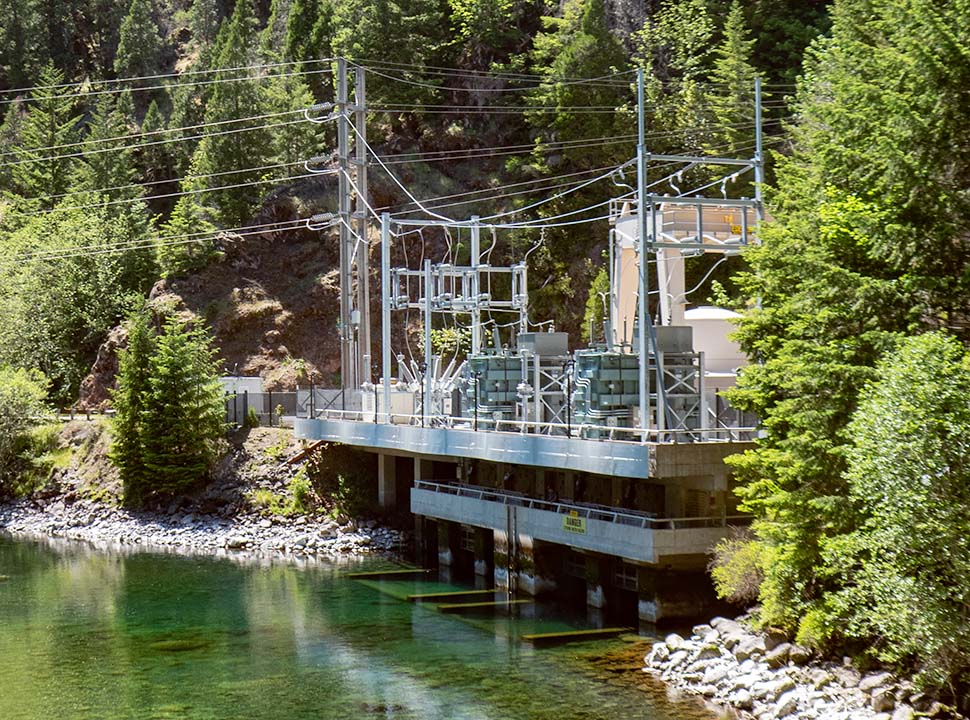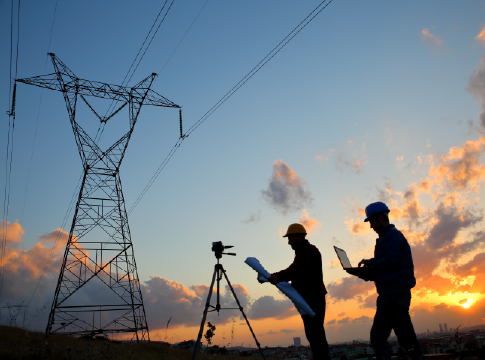More information
EWEB’s Integrated Resource Plan (IRP) will analyze possible energy resource portfolios with a goal of creating useful insights for long-term (20-year) electricity supply planning decisions.
Electric Outage: 1-844-484-2300
Water Emergency: 541-685-7595
EWEB Main: 541-685-7000
By 2030, a dry year combined with soaring energy demand during extended cold snaps could lead to rolling blackouts, a new study warns.
Find Out MoreSustainability Snapshops highlight impactful projects completed by EWEB's Customer Solutions department, as a way to celebrate the meaningful work happening behind the scenes.
Find Out MoreEWEB Commissioners approved a resolution authorizing the General Manager to negotiate and execute agreements with Lane Electric Cooperative regarding a potential realignment of electric service territory in the McKenzie Valley at the Board’s December meeting.
Find Out MoreThe new contract with EWEB’s largest energy supplier, the Bonneville Power Administration, forms the foundation of a diverse energy portfolio.
Find Out MoreEWEB Engineer Associate Val Chang found her way to the McKenzie River from Los Angeles, inspired by heritage trips to the waters of Taiwan and key mentors along the way.
Find Out MoreThe results are in! View the winning posters from EWEB's 2025 Public Power Week Poster Contest.
Find Out MoreOut of 290 teams from 14 different countries, EWEB's Lineman Rodeo team places in the top third of competitors.
Find Out MoreCommunity members are accustomed to spotting EWEB trucks around Eugene streets and neighborhoods. But last week, those familiar vehicles looked a little different. At EWEB's second annual Truck-or-Treat Customer and Crew Appreciation Event, our fleet transformed into a festive Halloween spectacle.
Find Out MoreWe're heading into the holidays, but that also means snow, ice, and not-so-nice weather might be in the forecast. Here are some tips to prepare in advance.
Find Out MoreThe top five submittals will receive awards. Help us pick the winners.
Find Out MoreEWEB led emergency responders in its annual “spill drill” on the McKenzie River on Wednesday, Oct. 15, at the Trail Bridge Campground.
Find Out MoreHundreds of attendees practiced filling up water containers at Saturday's demonstration event.
Find Out MoreUnderground lines and disaster-resilient power poles are part of EWEB’s infrastructure upgrade near Eugene’s largest natural resource area.
Find Out MoreEWEB launches nationwide search for next leader to continue the progress of the last decade and ensure a smooth transition.
Find Out MoreBPA’s finalized rate increase is smaller than projected, and EWEB’s pass-through adjustment effective October 1, 2025 will now be 2.7% for residential customers—down from the anticipated 4%.
Find Out MoreFebruary 12, 2025 • Aaron Orlowski, EWEB Communications

Demand for electricity in EWEB's service territory ascended to the highest levels in nearly a decade on Feb. 12.
Demand topped out around 8 a.m. at 493 megawatts. The official overnight low temperature descended to 22 degrees F, but some areas of Eugene saw temperatures dip into the teens.
Frigid temperatures cause energy demand to soar as heaters work harder to keep homes and businesses warm. Energy demand on the morning of Feb. 12 topped this winter’s previous record of 475 megawatts, which occurred on Jan. 28.
“When the cold lingers for days on end, energy demand tends to build, as indoor spaces never fully warm up,” said Katrina Starr, an energy trader at EWEB. “The cold temperatures we’ve seen in the last few days have been the longest stretch of cold that we’ve seen since 2017.”
In 2017, energy demand soared to 524 megawatts on Jan. 6, when low temperatures dropped to 13 degrees. But even that level of demand is well below EWEB’s all-time record, which took place on Dec. 9, 2013, when temperatures plummeted to -10 degrees F. That morning around 9 a.m., EWEB customers were consuming 557 megawatts of electricity, as heaters worked full-bore to keep homes warm.
The highest energy demand of the year almost always occurs in January or February, when temperatures are their lowest and cold fronts bear down on the Pacific Northwest. The overnight lows are the primary driver of peak energy demand, which tends to occur in the early morning hours.
“In our area, peak demand happens during the winter,” said EWEB Chief Energy Resources Officer Brian Booth. “As we plan for the future, we need to carefully consider adding energy resources to our mix that we can ramp up during cold weather to keep people warm and safe. Our existing hydropower resources do this very well, but we’ll need additional on-demand resources that can keep up.”
EWEB prepares for impending ice storm.
A wintry mix of snow and ice will begin falling in Eugene Wednesday night, according to the National Weather Service. EWEB crews are preparing for any possible outages.
Forecasts indicate that this storm will be milder than the 2024 ice storm, when a total of 38,000 EWEB customers lost power at some point and when EWEB crews worked 16-hour days for nearly two weeks straight to get the power back on for customers.
Precipitation will initially begin as mixed freezing rain and snow Wednesday night, transitioning over primarily to freezing rain on Thursday. Significant ice accumulations will be possible. Ice and snow accumulation increase the risk of tree limbs falling on power lines which can lead to power outages and downed wires.
EWEB has activated its incident response protocols and crews are on standby to brave the cold and ice overnight to get the power back on for any outages that do occur. The utility has confirmed that critical equipment and systems are ready to be used in restoration. As always, crews will focus first on making any dangerous areas safe, then assess the situation to develop response plans.
If community members see downed power lines, always assume the line is energized and stay at least 50 feet away. If the downed line is across a street or sidewalk, call 911. Remember to stop and observe to survive.
EWEB’s Integrated Resource Plan (IRP) will analyze possible energy resource portfolios with a goal of creating useful insights for long-term (20-year) electricity supply planning decisions.
Para asistencia en español llame al 541-685-7000, presione 9
Mailing Address: 4200 Roosevelt Blvd., Eugene, OR 97402
Phone: 541-685-7000
Toll free: 800-841-5871
Email: eweb.answers@eweb.org
Customer service phone hours: 8:30 a.m. to 5 p.m. Monday - Friday



